|
|
|||
|
(Back to Preceding Week; on to Next Week) |
|
Blue-throated
|
A few spaces are still available for our 2010 midwinter HUMMINGBIRD |
Canivet's
|
|
All text, charts, tables & photos © Hilton Pond Center RUBY-THROATED HUMMINGBIRDS
It makes perfect sense at Hilton Pond Center we encounter many fewer Ruby-throated Hummingbirds during spring than in summer and autumn. After all, the only early birds are adults that manage to make the long trip north after wintering in Mexico or Central America; not until these returnees mate and produce young in early summer do hummingbird numbers begin to grow. By early June the first fledglings are out and about, followed perhaps six weeks later by any second-brood siblings a female may produce. Finally, in late August and September numbers increase dramatically as resident birds are still present AND hummers from further north pass through in southbound migration. We know from experience this cycle happens every year, but such knowledge never seems to alleviate our anxiety the current banding season will be a bust and our overall numbers of ruby-throats will be low. This was especially the case in 2009 when we had by far our slowest start ever. Despite initial alarm, however, we ended up with our fastest finish and fourth best total in 26 years of banding hummingbirds. All text, charts, tables & photos © Hilton Pond Center Chart 1: Click on chart above to open a larger image in a new browser window As indicated by the red line on Chart 1 (above), 2009 started so slowly that as late as mid-August we wondered if we'd reach even a hundred ruby-throats this year. (It didn't help much that last year's bandings--indicated by a purplish-pink line on the same chart--were above-average for most of the season and ended up at 230, our all-time record for Hilton Pond Center.) Conversely during 2009, for the first time in 26 years we banded NO ruby-throats in March, April, or May, with our first new capture not occurring until 2 June. (By that date we normally would have caught an average of 16 RTHU; in 1997 we reached 39!) Throughout the painfully slow spring of '09 our only hummer in-the-hand was a returning bird on 21 May. By the end of June we had banded a grand total of TWO ruby-throats and only FOUR for the year when we left on 8 July for a two-week trip to California. Upon returning from the West Coast we got a minor bump up with 12 RTHU in ten days, but by July's end had banded just 16 hummers--about 29% of where our 25-year average said we should have been. The first three weeks of August weren't a whole lot better--just 26 new RTHU in a 21-day span that boosted us to 45% of average--but things improved substantially thereafter. We happily handled 15 hummers on 23-24 August to kick off what the chart shows as a near-vertical red line and our most productive one-month period for hummingbirds in all our years of banding at Hilton Pond. On 4 September we banded 15 RTHU--our third biggest one-day total in 26 years--with daily tallies running well until about 21 September when we reached the 187-bird mark. As expected, at that point the bottom fell out but we still managed to catch another 18 ruby-throats--the last of the year on 8 October--bringing the total for 2009 to 205. And THAT, considering the slow start, was quite a surprise! All text, charts, tables & photos © Hilton Pond Center Chart 2: Click on chart above to open a larger image in a new browser window As shown on Chart 2 (above), since 1984 we have banded more than 200 Ruby-throated Hummingbirds just five times--all in the past six years. You'll also notice the red trend line shows a steady annual increase of new RTHU captures since we began 26 years ago. We don't think we've been getting particularly better at catching hummers--although we'll mention something about this year's techniques in a moment--so we might conclude the local population of Ruby-throated Hummingbirds is growing. That indeed might be the case, perhaps because Hilton Pond Center's changing habitats have become more attractive to hummers. When we purchased the property in 1982, the entire 11 acres was wide open with only a few mature trees. Now, through natural succession we have a mix of young woodland, shrubby areas, and small meadows that allow for greater diversity of flowering plants. Of these, our Trumpet Creeper thickets have matured mightily with many massive vines producing thousands of nectar-bearing blossoms each summer (below).
All text, charts, tables & photos © Hilton Pond Center Trumpet Creeper, Campsis radicans, is a true "hummer magnet" and is possibly the single most important native hummingbird flower across the eastern U.S. It stands to reason lots of Trumpet Creeper blooming at the Center May through September may have brought in and sustained increasing numbers of ruby-throats through the years--particularly now that the property also offers lots of nesting sites and shelter in a variety of trees and shrubs.
All text, charts, tables & photos © Hilton Pond Center Most years we catch the majority of our Ruby-throated Hummingbirds in any of several kinds of traps in which the door is activated via pull-string or electronic remote. As we work at our computer desk or dine at kitchen table, we always have one eye on the computer screen or dinner plate and the other on traps just outside the window. If a hummer enters to drink some sugar water, we pull the string or hit the button and capture the hungry bird. Most days April through October we also run a half dozen 30mm mist nets dawn to dusk around the Center's old farmhouse and check them every quarter-hour to see if any hummingbirds have gotten caught. Historically we caught 75% or more of our RTHU in traps activated by the bander; the remaining 25% got snared in nets. This year, however, we introduced a different trapping procedure that may have had major impact on results.
All text, charts, tables & photos © Hilton Pond Center In late July we learned about a new style of hummingbird trap developed by Ross Dawkins of San Angelo TX. Ross covered two metal hoops with half-inch plastic netting and connected them with a cylinder made of similar mesh. Ross hung a hummingbird feeder inside After cutting a 4" x 4" opening in the lower cylinder wall; there are no moving parts but a hungry hummer can get at the feeder through the opening. Rather than backing out of the trap via the relatively small hole through which it entered, a typical hummingbird flies upwards and becomes disoriented temporarily--just as it might after flying through an open garage door. Most hummers take a while to find their way down and out of the Dawkins trap, so it's simply a matter of keeping an eye on the apparatus and extricating any hummingbird inside before it escapes on its own. Following instructions and a photo (above) sent by master hummingbird bander Brent Ortego, one of Ross's colleagues who tried the set-up, we decided to give the Dawkins trap a try and spent several hours in mid-August making our first two. We deployed our new Dawkins devices on 24 August and that day caught eight ruby-throats--one in a mist net, one in a pull-string trap, and six in the Dawkins traps. After this preliminary success we manufactured and put out two more traps designed by Ross and saw an amazing increase in hummers captured for banding. From 24 August until season's end we caught 156 Ruby-throated Hummingbirds--just 28 in mist nets and 23 in pull-string or electric traps, but a whopping 105 in Dawkins traps. Although part of the increase was due to the usual August irruption of ruby-throats, we're convinced many Dawkins trap captures would have passed through Hilton Pond Center without ever being banded; we suspect these hummers would have avoided nets and/or would not have been observed in a bander-operated trap when we could trigger the trapdoor. We can't wait to see what happens NEXT year when we have Dawkins traps deployed as the first ruby-throats beginning returning from the Neotropics.
All text, charts, tables & photos © Hilton Pond Center Banding hummingbirds allows us to collect information about these tiny birds that is simply unavailable otherwise. In addition to learning specifics about where ruby-throats migrate to and from, we find out about site fidelity and longevity--two things one cannot deduce unless individuals are captured, banded, and then encountered again at a later date. Conveniently, using plumage characters we can also tell with 100% accuracy the sex of a Ruby-throated Hummingbird in the hand, and at Hilton Pond Center can determine conclusively whether a bird is immature or adult. (Notice the incomplete red gorget and dark throat streaking on the immature male, above.) Knowing the age make-up of a RTHU population is of importance; if one autumn we band lots of immatures we might conclude nesting attempts were successful, but if another year yields mostly adults and very few immatures it might indicate breeding collapse--perhaps due to a late spring freeze, stormy summer weather, or some other external factor such as an environmental pollutant that might disproportionately affect young hummers. In any case, knowing one year's age ratios are "off" might lead us to look for the proximal cause and, if possible, take action to bring things back into balance.
All text, charts, tables & photos © Hilton Pond Center We have no speculation on recent causative factors, but in 2009 the number of adult birds banded was low while immatures of both sexes were well above average (see Table 1 above). Adult females were particularly scarce; they usually outnumber adult males by about a 3:2 ratio at Hilton Pond Center. (Immature males outnumber young females by that same margin.) Interestingly, we set a new high with 71 immature females and came within sight of the record for young males. The low numbers of adults is related, in part, to our catching NO new birds March through May when adults would have been the only ruby-throats available. Still, we should have caught more than just 16 adult hummers in June and July after this year's broods began fledging.
All text, charts, tables & photos © Hilton Pond Center Just as we captured few new adult Ruby-throated Hummingbirds in 2009 at Hilton Pond Center, we came nowhere near our average for recapturing old birds banded in previous years (see Table 2 above). Our only return during the first three months of the season was on 21 May, followed by one in June, 5 in July, 7 in August, and a rather late one on 5 September. This brought our 2009 final tally to 16 returns--far below our high of 49 set in 2007 and less than our 26-year average of 24. A low rate of returns among previously banded birds is also related to the relative absence of RTHU from the Center through early July. Curiously, only one of this year's 16 returns was captured in one of our new Dawkins traps; half were snared in mist nets. Of the 2009 returnees, nine were from 2008, but one--a female banded as an adult in 2005 and now in at least her sixth year--is one of the oldest Ruby-throated Hummingbirds recorded for Hilton Pond Center. (The federal Bird Banding Laboratory, repository for banding data in the U.S., lists nine years as the longevity record for ruby-throats.)
All text, charts, tables & photos © Hilton Pond Center Among other things of interest about Ruby-throated Hummingbirds returning to Hilton Pond Center in 2009:
Adult male Ruby-throated Hummingbird (above) with full red gorget and faded green color mark on upper breast All text, charts, tables & photos © Hilton Pond Center As usual for our end-of season hummingbird report we've shown you a bunch of numbers. That's about the only way to summarize our annual hummer banding results, so we hope the analysis has been of interest and you can relate it to Ruby-throated Hummingbirds you observed this year in your own backyard. If nothing else it can be food for thought through the cold winter months as we all wait to see whether next year's hummers have another slow start and fast finish at Hilton Pond Center. All text, charts, tables & photos © Hilton Pond Center
NOW is the time to report your RTHU fall departure dates from the U.S. & Canada, and fall arrival dates for Mexico & Central America. Please participate.
Comments or questions about this week's installment?
Thanks to the following fine folks for recent gifts in support of Hilton Pond Center for Piedmont Natural History and/or Operation RubyThroat: The Hummingbird Project. Your tax-deductible contributions allow us to continue writing, photographing, and sharing "This Week at Hilton Pond." (Please see Support if you'd like to make a gift of your own. You can also contribute by ordering an Operation RubyThroat T-shirt.)
"This Week at Hilton Pond" is written & photographed You may wish to consult our Index of all nature topics covered since February 2000. You can also use our on-line Hilton Pond Search Engine at the bottom of this page. For a free, non-fattening, on-line subscription to |
||||||||||||||||||||||||||||||||||||||||||||||||||||||||||||||||||||||||||||||||||||||||||||||||||||||||||||||||||||||||||||||||||||||||||||||||||||||||||||
|
Make direct donations on-line via
Network for Good: |
|
|
Use your PayPal account
to make direct donations: |
|
|
If you like to shop on-line, you please become a member of iGive, through which more than 750 on-line stores from Barnes & Noble to Lands' End will donate a percentage of your purchase price in support of Hilton Pond Center and Operation RubyThroat. For every new member who signs up and makes an on-line purchase iGive will donate an ADDITIONAL $5 to the Center. Please sign up by going to the iGive Web site; more than 200 members have signed up to help. It's a painless, important way for YOU to support our on-going work in conservation, education, and research. |
|
|
SPECIES BANDED THIS WEEK: * = New species for 2009 WEEKLY BANDING TOTAL 0 species 0 individuals 2009 BANDING TOTAL 62 species (28-year avg. = 68.9) 1,694 individuals (avg. = 1,913.4) 28-YEAR BANDING GRAND TOTAL (since 28 June 1982, during which time 170 species have been observed on or over the property) 124 species 53,576 individuals
|
OTHER NATURE NOTES OF INTEREST --An out-of-town trip this "short week," meant no banding occurred at Hilton Pond Center. All text & photos © Hilton Pond Center
NOW is the time to report your RTHU fall departure dates from the U.S. & Canada, and fall arrival dates for Mexico & Central America. Please participate.
|
|
(Back to Preceding Week; on to Next Week) Up to Top of Page Back to This Week at Hilton Pond Center Current Weather Conditions at Hilton Pond Center |
 You can also post questions for The Piedmont Naturalist |
Join the |
Search Engine for |
|
|
Thrifty Car Rental Coupons

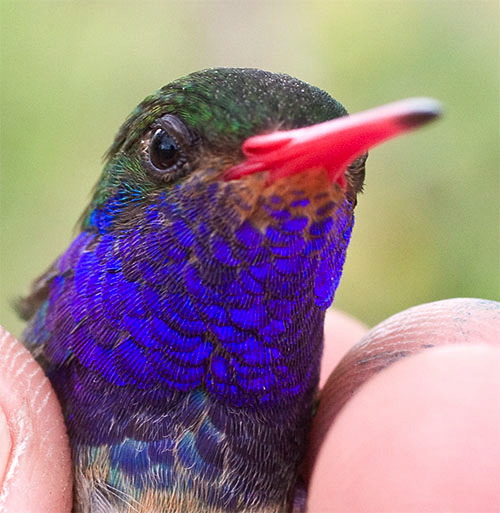
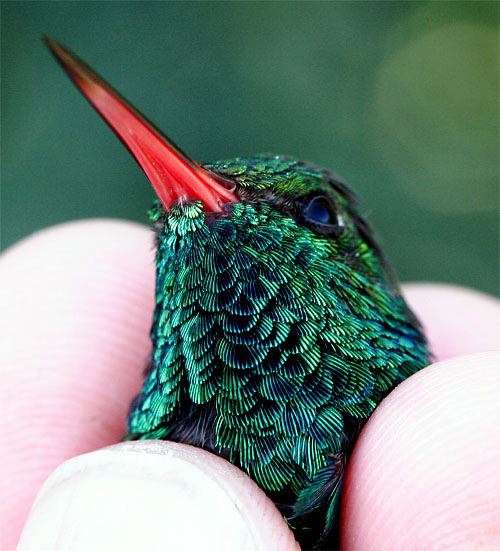
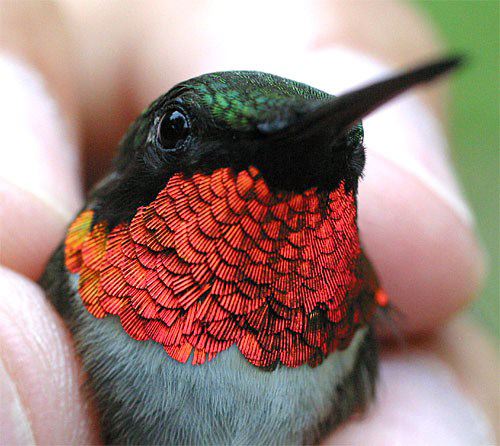
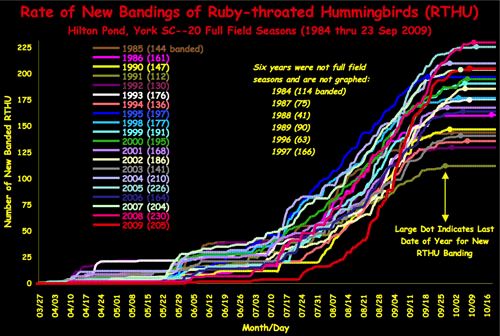
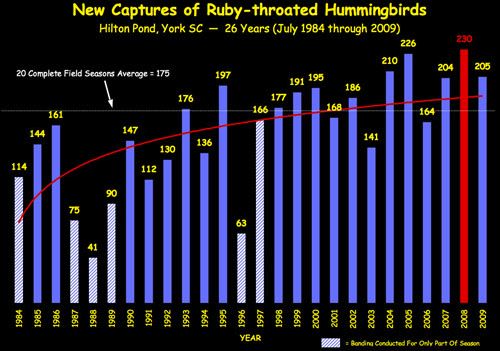



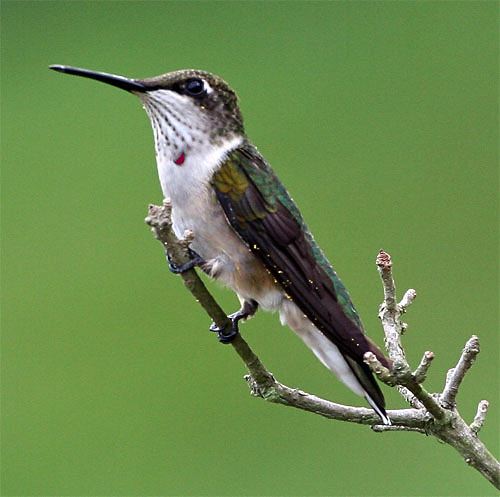
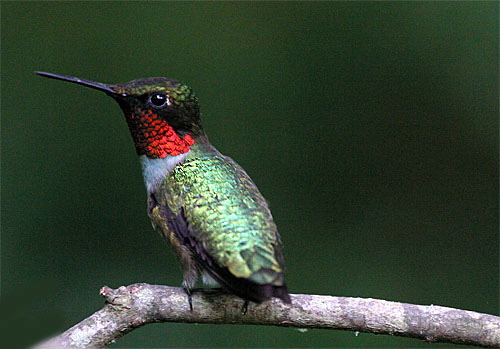
 NOTE: Operation RubyThroat has teamed with
NOTE: Operation RubyThroat has teamed with 

 Oct 15 to Mar 15:
Oct 15 to Mar 15: